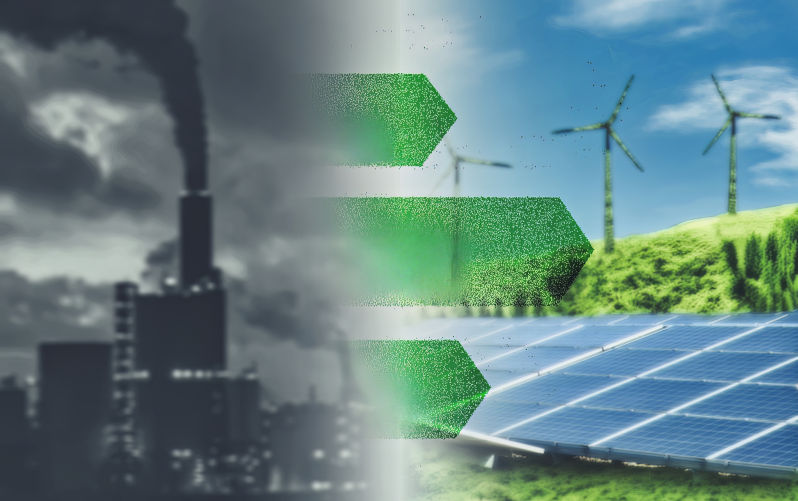'A national humiliation': Australia at bottom of new renewables ranking
November 17, 2025
As the Coalition abandons net zero, Andrew Forrest has quietly moved on not just to net zero, but to real zero.
And in doing so, he has exposed something far more consequential than the Opposition’s internal dysfunction: the deep structural weakness of the Australian economy revealed by the new Harvard Greenplexity Index, where Australia sits 142nd out of 145 countries.
That ranking — a humiliation for a wealthy nation — measures a country’s capacity to build the green industries of the future: renewable manufacturing, clean-tech, advanced materials, green industrial capabilities. It is the single clearest signal yet that Australia is not prepared for the post-fossil economy.
Only three countries in the world are less prepared.
Against that backdrop, Forrest’s pivot to “real zero” reads less like a billionaire’s climate epiphany and more like a survival instinct. His company, Fortescue, has committed $6.2 billion to eliminate fossil fuels entirely from its operations by 2030. No offsets. No CCS fantasies. No creative accounting. Just full replacement of fossil fuels with renewables, electrification, hydrogen and innovation.
Three new reports from Climate Analytics confirm what Forrest now sees plainly: in the hardest-to-abate sectors of heavy trucking, fertiliser, and steelmaking real zero is not just technically possible, but already economically preferable.
Battery-electric long haul trucks will undercut diesel by 2030. Green hydrogen steel will outcompete coal-based production in Japan by the early 2030s. Green ammonia fertiliser in India will be cheaper than fossil ammonia in renewables-rich regions before 2030.
In other words, the world’s industrial future is being rewired around renewables. Australia sitting at the bottom of the Greenplexity Index is not.
Net zero is a con, but so is pretending Australia is ready
Forrest calls net zero a “con,” and he is right. Net zero has become the political class’s favourite loophole: a way to promise climate action while quietly preserving the extractive economy. Offsets allow governments to keep approving new gas fields, new coal expansions and new pipelines while declaring themselves climate leaders.
But the Greenplexity Index shows a deeper, more dangerous con: the belief that Australia can continue to rely on mining, migration, property and fossil exports while the world industrialises around clean energy.
Our economic structure, the “quarry and the towers” model, is now a strategic liability.
While countries like India, Japan, South Korea, Germany, Brazil and China are building new industrial systems around clean steel, green fertiliser, batteries and electrified transport, Australia’s ranking tells a stark truth: we have almost no domestic capability in the industries that matter most in a decarbonising world.
Business is moving. Politics is not.
The irony is brutal. The Coalition has dumped net zero. Labor has a legislated target, but still leans heavily on offsets and fossil expansion. And Forrest, who made billions selling iron ore into the old industrial system, is the one pointing to the emerging one.
The Climate Analytics findings and the Greenplexity results both point in the same direction: the global energy and industrial transition is already economic reality and Australia is structurally unprepared for it.
This is not a moral argument (though there is one). It is a strategic warning. As Forrest puts it, “fossil fuels are no longer an economic necessity but a financial liability”. Australia, astonishingly, is still organising its economy around that liability.
How did we fall so far behind?
The Greenplexity rankings answer that directly. They measure technological readiness, capacity to build green value-chain industries, supply chain diversity, R&D intensity and industrial capability.
Australia’s bottom-tier ranking reflects decades of bipartisan policy failure: a reliance on extraction rather than production; property speculation instead of innovation; privatisation over public investment; and political capture by fossil capital. In short: Australia has spent 30 years building an economy for the past, not the future.
Real zero is not just possible – it is essential
The reports Forrest commissioned show that real zero is now the cheaper path in key sectors. The Greenplexity Index shows that nations who embrace it will dominate the global economy. Together, they form the clearest roadmap we’ve had in decades.
Real zero is not a luxury. It is an industrial strategy. It is how Australia shifts from being a quarry economy at the bottom of the world’s capability rankings to a nation that actually makes things again, including clean steel, green hydrogen, green fertiliser, advanced storage, electrified transport and the technologies the 21st century will run on.
Australia is running out of time
If we continue to treat climate transition as a political football or a branding exercise, the consequences will not be cultural or symbolic they will be economic. A country that is the world’s 13th-largest economy, with world-leading renewable resources, extraordinary mineral endowments and decades of technical expertise should not be sitting at 142 of 145 in preparedness for the new industrial age. That is not a natural outcome. It is the result of choices.
Economics have overtaken ideology and Australia must decide
The world is shifting from fossil-fuelled industry to electrified industry, from extraction to clean production, from offsets to real zero. Businesses like Fortescue are moving because the economics are undeniable.
The question is — whether Australia’s politics with too many still hostile to the idea that climate change is real, still captured by fossil interests, still comforted by offset fairy tales — can catch up.
Because the future has already begun.
And Australia, for now, is ranked almost last in its ability to participate in it.
The views expressed in this article may or may not reflect those of Pearls and Irritations.
